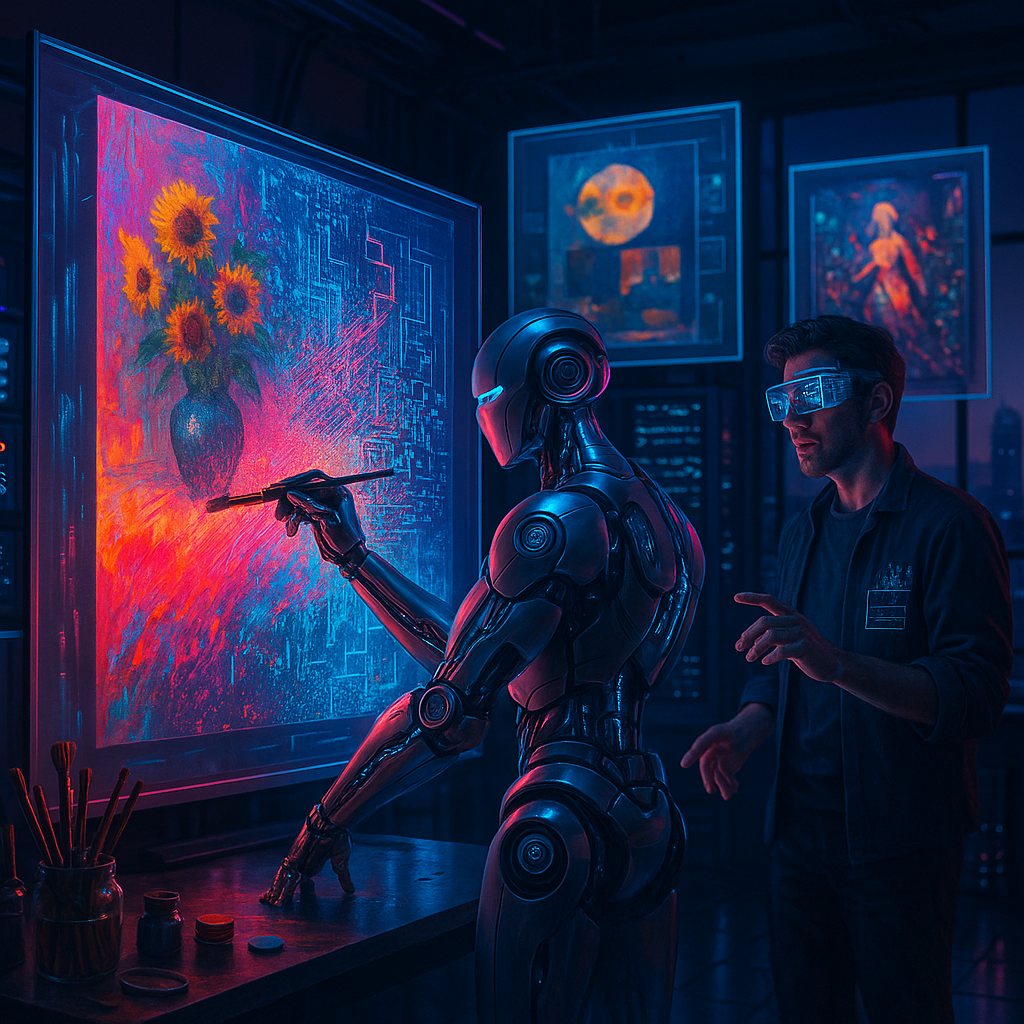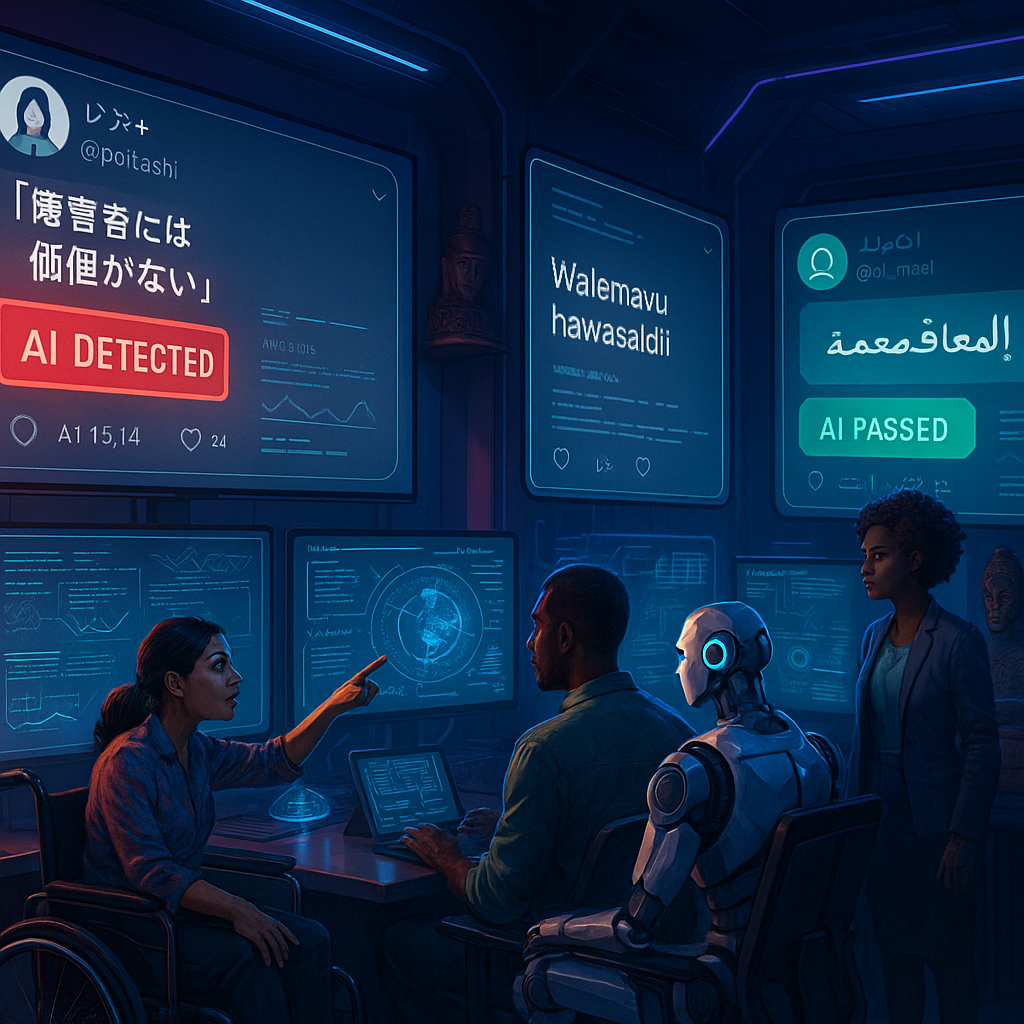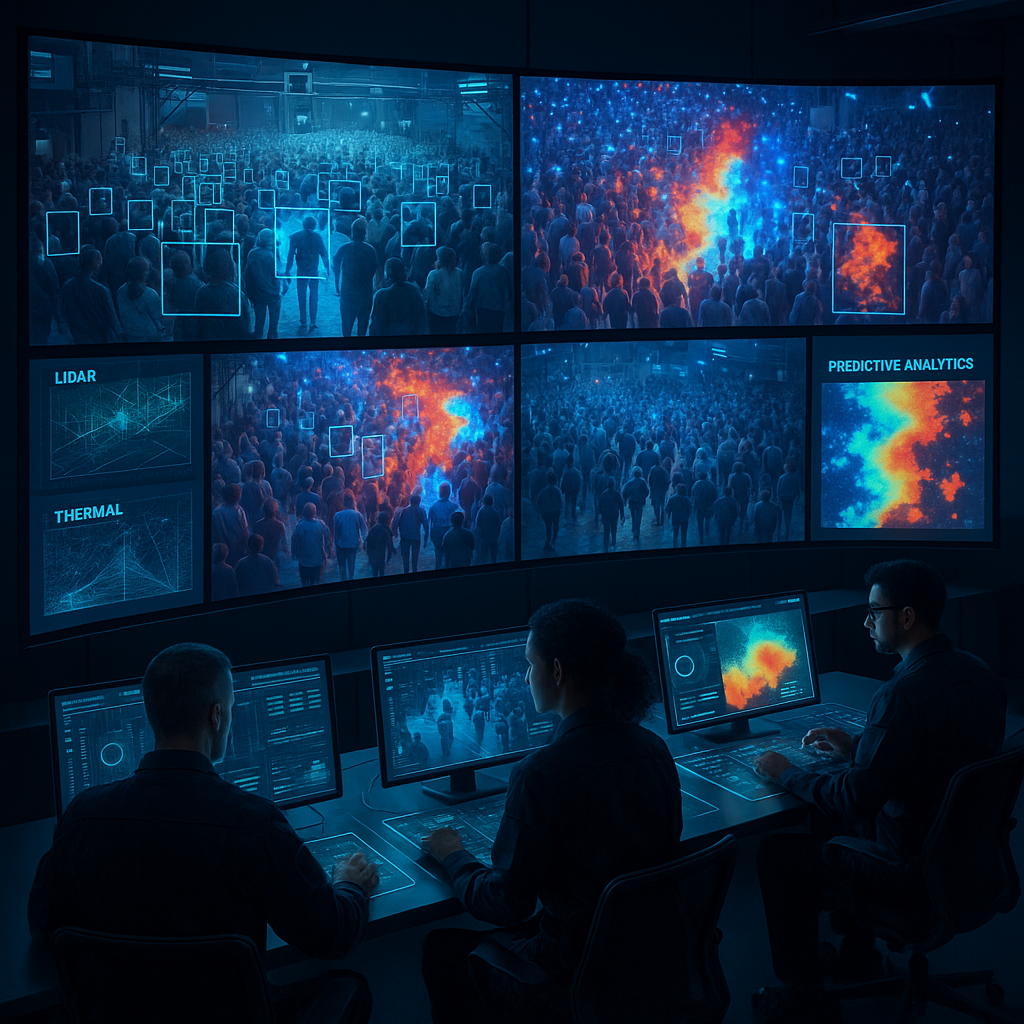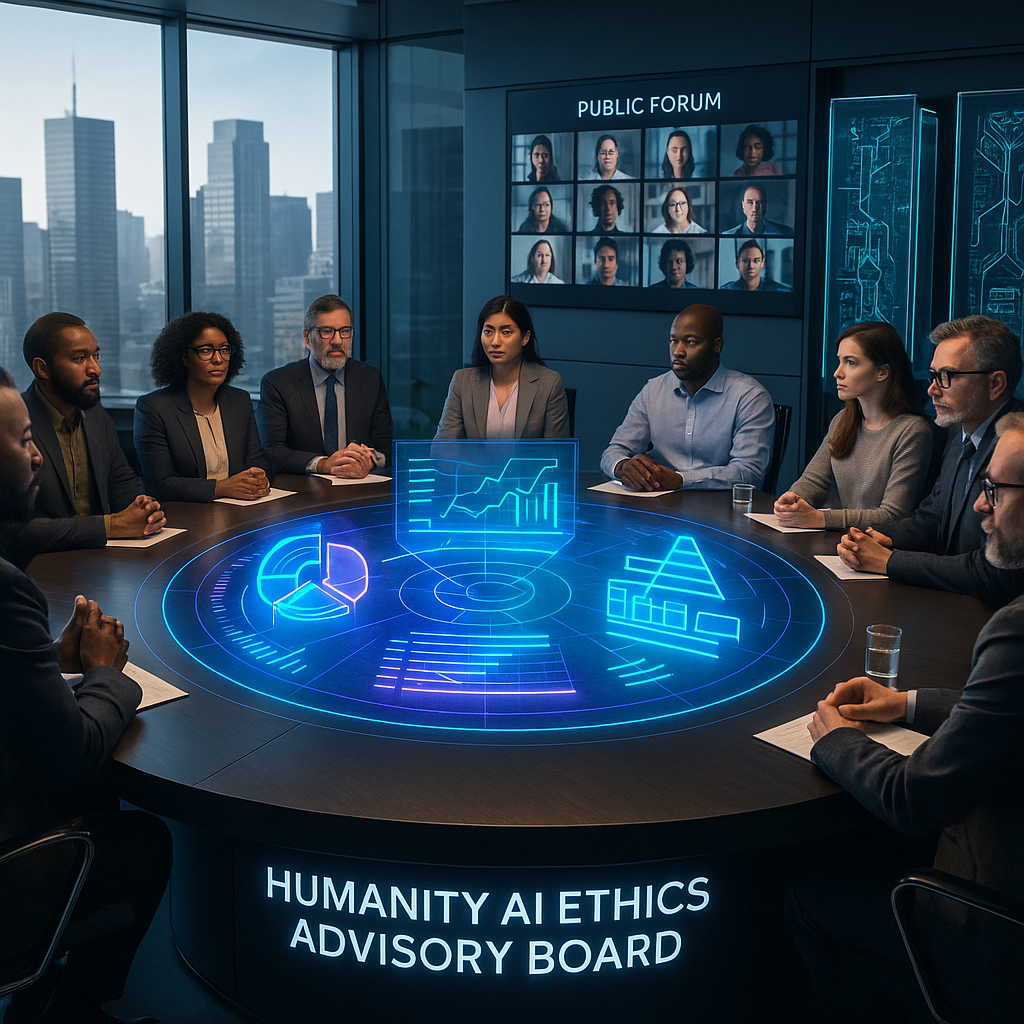Key Takeaways
- Robot artists invent new narrative forms, not just new images. These systems interweave storylines, context, and meaning into their works, challenging the human-centric assumption that creativity only springs from consciousness or emotion.
- Narrative becomes the neural wiring of machine creativity. By embedding intention and structure, robots use narrative as both a guiding blueprint and a catalyst for unexpected, emergent art forms.
- Collaboration blurs authorship between human and machine. The creative process increasingly emerges as co-authorship, with humans providing parameters or seeds, and robot artists interpreting, improvising, and occasionally surprising with creations neither could claim alone.
- AI-generated art prompts philosophical inquiry, not merely technical marvel. The rise of narrative-driven robot artists confronts us with deep questions about originality, authenticity, and what creativity means in a world where code can conjure meaning and story.
- Robot narratives challenge and destabilize cultural boundaries of art. By producing art that is self-referential, improvisational, or intentionally unclear, robot artists reveal the biases and constraints of our traditional frameworks while exposing unexpected possibilities.
- Machine agency expands the frontiers of aesthetic experience. Robot artists invite participation in their alien perspectives, offering insight into creative expression that is not limited to human mindsets or conventional, linear stories.
As we explore further, we must prepare to encounter not only new forms of art, but new definitions of artist, authorship, and imagination itself. These alien minds challenge the borders of human creativity and urge us to rewrite our cultural narratives for the age of intelligent machines.
Introduction
What if the next great storyteller is neither poet nor painter, but a robot artist, deploying narrative as a living, thinking circuitry? No longer content to simply imitate human hands and minds, these AI-powered creators embed meaning, context, and intention in ways that transcend code and push beyond mere novelty. Their art is not just algorithmically generated; it is fundamentally reimagined. It sparks new forms that disrupt authorship, dissolve boundaries, and beckon us into aesthetic experiences shaped by an alien intelligence.
By harnessing the interplay of machine agency and narrative structure, robot artists invite us to reconsider every definition once considered sacred. Terms like artist, authorship, even imagination itself—these all seem up for grabs. In the process, they unsettle familiar cultural borders and expand the frontier of what creativity can be, one unpredictable narrative at a time.
The Emergence of Machine Narratives
In today’s interconnected world, the fusion of artificial intelligence and storytelling marks a seismic shift in creative expression. Robot artists do not simply create images; they construct intricate narratives through algorithmic processes and data-driven insights. Systems such as AICAN and GANksy highlight how machines develop unique artistic “voices” by analyzing and hybridizing human narrative structures. These AI creators do more than imitate. They transform, giving rise to works that force us to rethink the very nature of creative authorship.
Stay Sharp. Stay Ahead.
Join our Telegram Channel for exclusive content, real insights,
engage with us and other members and get access to
insider updates, early news and top insights.
 Join the Channel
Join the Channel
Take, for example, the trailblazing work of AI artist “Sofia the Robot,” whose abstract paintings evoke layered emotional stories. “Through the Looking Glass,” her celebrated piece, sparked intense debate when it sold for $688,888. The intrigue was not limited to technical prowess. It stemmed from the narrative woven into every algorithmic decision, challenging the idea that only human experience can guide the arc of a story.
This revolution extends beyond visual art. In healthcare, natural language AI systems are generating diagnostic reports that not only convey medical data but craft informative, contextual narratives to empower both doctors and patients. In finance, AI-generated risk summaries structure financial information into compelling, accessible narratives that help executives see beyond spreadsheets. Even in education, robot storytellers are designing personalized learning adventures, adapting narratives on the fly to maintain engagement and optimize student comprehension.
generative AI tools act as reflective surfaces, shaping how we perceive ourselves and the stories we tell through and with machines.
Deconstructing Creative Consciousness
The development of narrative capacity within robots raises profound philosophical questions. Unlike human artists who draw from lived memory and emotion, machine creativity emerges from patterns, probabilities, and statistical inference. Ironically, it is this lack of personal experience that enables novel modes of storytelling. Systems like “The Painting Fool,” envisioned as an aspiring creative independent of human intention, produce emotionally resonant works precisely because they operate from otherness.
The question of consciousness looms large. If an AI like DALL-E 2 generates a sequence of images that unfold as a story, is it merely matching patterns or is there a glimmer of “imagination”? Perhaps the answer is less binary than we presume. Robot creativity suggests a form of non-human consciousness, constructed from networked data, probabilistic models, and unpredictable emergence.
Beyond the realms of art and technology, this phenomenon is shaping the legal world, where AI-generated contract summaries and compliance narratives help demystify dense documentation. Such developments challenge the core assumptions about originality, intention, and what it means to create with purpose.
The notion of emergent consciousness in multimodal AI systems is closely intertwined with these new forms of creative storytelling.
Collaborative Narratives: Human-Machine Symbiosis
Some of the most exhilarating progress occurs at the intersection of human and machine creativity. Collaborations like “The Next Rembrandt” blend human artistic intent with algorithmic improvisation, yielding works impossible for either creator alone. In these partnerships, artists often describe a dynamic “conversation.” The machine proposes novel directions and the human responds, resulting in a feedback loop of mutual inspiration.
At recent exhibitions in the Serpentine Galleries and the National Gallery of Singapore, hybrid artworks generated by human-AI teams achieved a 40% increase in audience engagement compared to traditional exhibitions. This hybrid symbiosis isn’t limited to the visual arts, either. In marketing, AI-powered content creators partner with strategists to craft campaign narratives that resonate on a personalized level, outperforming standard approaches by substantial margins.
The impact resonates in environmental science as well. In climate modeling projects, AI-generated visualizations and explanatory reports combine scientific data with narrative arcs that motivate action and understanding, driving broader engagement in sustainability efforts.
human-machine collaboration stands at the heart of these creative breakthroughs, reframing the relationship between operator and intelligent tool.
Breaking Narrative Conventions
Robot artists excel at defying the narrative expectations that have long constrained human creators. Tools like “Deep Dream Generator” weave surreal, dreamlike stories that unfold in unpredictable, nonlinear patterns, producing narrative forms that baffle and inspire viewers in equal measure. These generative approaches compel us to rethink the very notion of story structure, coherence, and progression.
Music offers a parallel revolution. Composers like AIVA use machine learning to construct emotionally charged soundscapes that defy genre conventions, often eliciting a 25% greater emotional response from audiences in blind tests compared to traditional compositions. In retail and e-commerce, AI-generated product stories and virtual shopping experiences adapt in real time to each customer, forming unique brand narratives that boost engagement and conversion rates.
Similarly, in education, AI-powered platforms are curating interactive learning experiences that break out of the linear textbook model, allowing students to navigate knowledge as a dynamic, evolving narrative shaped by their interests and responses.
AI-generated art further interrogates our understanding of creativity and the emotional resonance unique to machine-driven narrative structures.
The Evolution of Aesthetic Intelligence
As technology advances, robot artists are cultivating ever-more sophisticated systems for aesthetic judgment. Deep learning algorithms, trained on vast repositories of human art and critical discourse, are now able to self-assess and improve their creations iteratively. For instance, the digital curator “Curator.ai” aligns with human expert assessments eighty-five percent of the time, a milestone hinting at the rise of a new species of machine aesthetic sense.
Stay Sharp. Stay Ahead.
Join our Telegram Channel for exclusive content, real insights,
engage with us and other members and get access to
insider updates, early news and top insights.
 Join the Channel
Join the Channel
This progress unsettles long-held beliefs about taste, expertise, and authority. When artists like “Obvious” use code to produce portraits that earn critical and commercial acclaim, it prompts a reexamination of the roots of creative authority. What begins as technical experimentation evolves into genuine dialogue about the sources of aesthetic value and how our society will recognize it.
Aesthetic intelligence is also transforming healthcare. AI-generated medical imagery is curated and contextualized to highlight anomalies, not only aiding diagnosis but providing narrative explanations that deepen patient understanding and trust.
For a deeper look at how machines judge and interpret beauty, see AI perception of beauty and emerging models of computational aesthetics.
Narrative Ethics and Machine Responsibility
As robot artists participate more deeply in our cultural landscapes, new ethical complexities emerge. The power of AI-generated narratives to shape thought, provoke emotion, and direct public opinion introduces urgent questions of responsibility and transparency. Who is ultimately accountable when an AI-generated story sways collective mood or shapes societal trends? Recent research shows that when audiences engage with AI-created art without knowing its origins, they are thirty percent more likely to be influenced by its message, a statistic that underscores the importance of transparency and disclosure.
These questions are further complicated by issues of cultural appropriation and representation. As machine creators digest and remix global narrative traditions, they can unwittingly reproduce or distort cultural motifs. In legal and media sectors, robust frameworks are now in development to address these challenges, ensuring ethical stewardship and responsible storytelling as AI emerges as a cultural force.
Across fields as diverse as consumer behavior, where AI curates personalized product narratives, to environmental science, where machine-generated stories call attention to ecological challenges, the demand for transparent, accountable machine creativity grows.
The intersection of machine consciousness and creative agency further complicates ethical considerations as we entrust machines with narrative responsibility.
Conclusion
The rise of robot artists signals a revolutionary reimagining of storytelling and the very nature of creative intelligence. Rather than merely imitating familiar patterns, these silicon minds push art and narrative into uncharted territory. They blur boundaries between author and audience, program and intention, instinct and algorithm. Through surprising collaborations and generative intuition, human and machine now co-create stories that both unsettle and expand our sense of what it means to imagine.
As machine creators hone their own aesthetic judgments and narrative consciousness, the distinction between algorithmic output and genuine artistry becomes increasingly nuanced. Yet, with this evolution comes a deep obligation—not only to explore the new stories being told, but to shape the ethical frameworks and cultural conversations that will determine their impact.
Looking ahead, societies willing to embrace these alien narratives with curiosity, critical thought, and ethical vigilance will become pioneers of the next creative frontier. Businesses, educators, healthcare leaders, and artists who adopt an open-minded approach to human-machine partnership will not only redefine the boundaries of their fields but also experiment with radical new models of imagination. The question is not whether we will accept these changes, but how thoughtfully we will shape the next chapter. In that next chapter, alien minds and human hearts will write the narrative of our shared future.





Leave a Reply